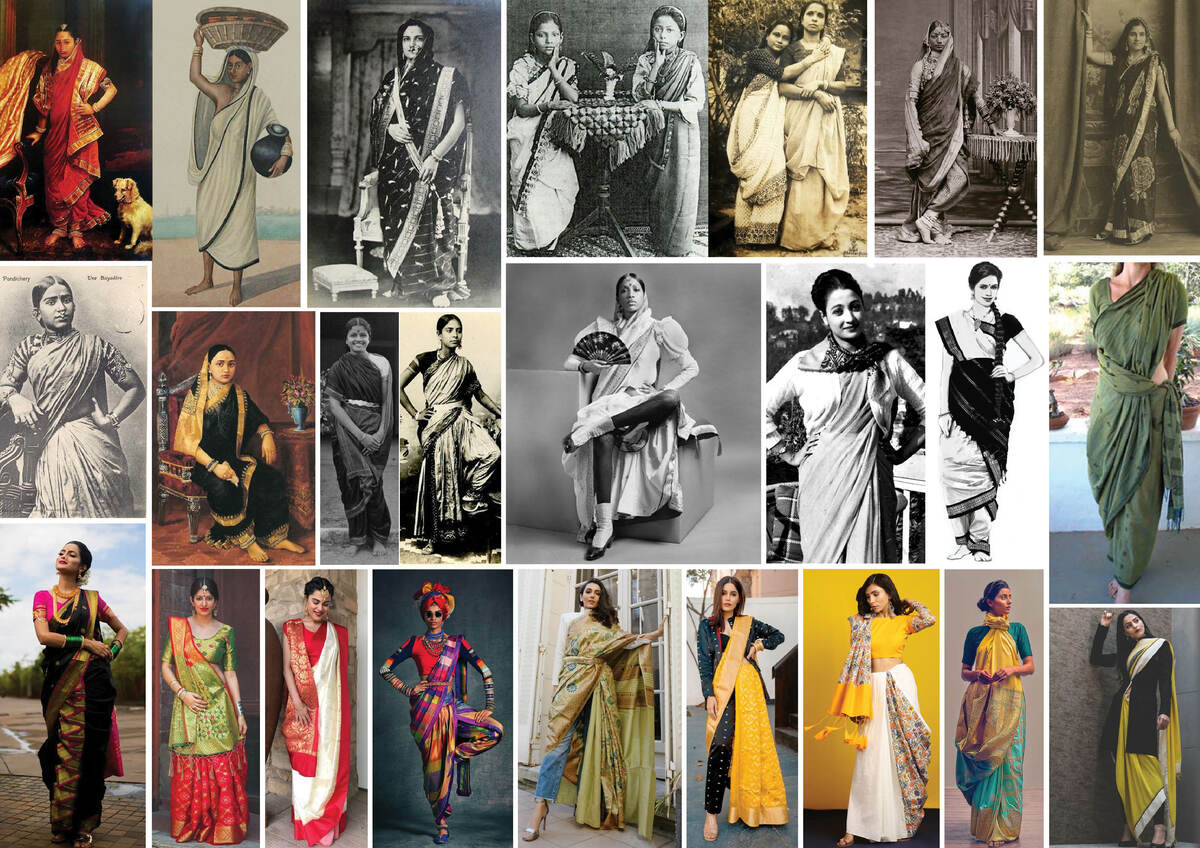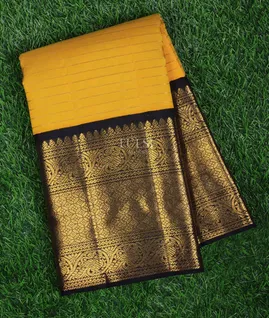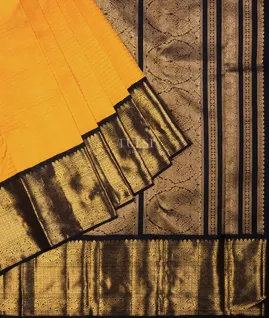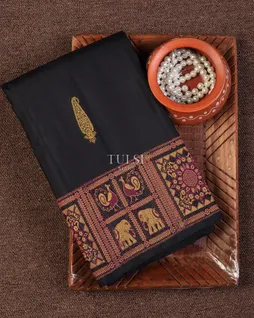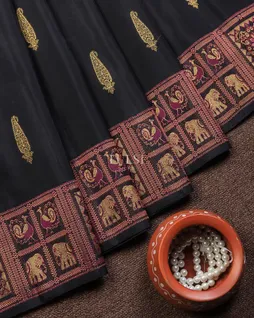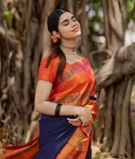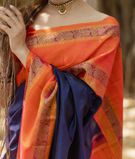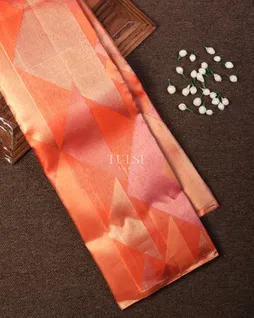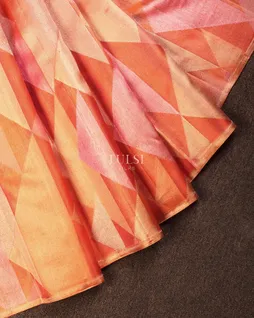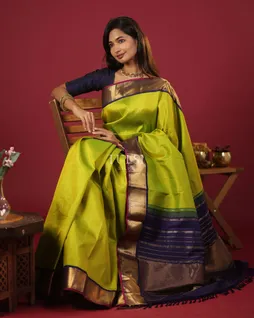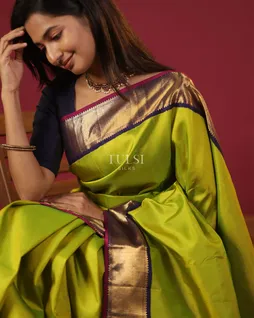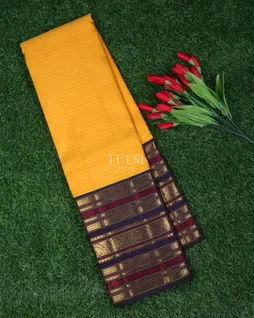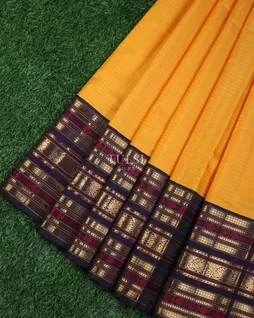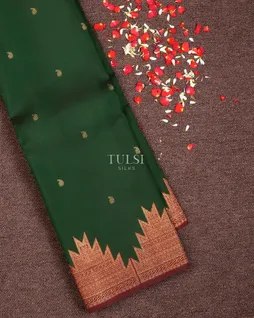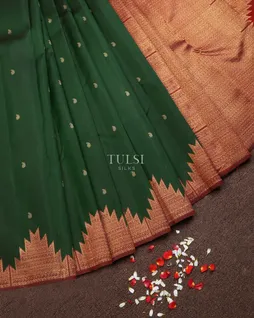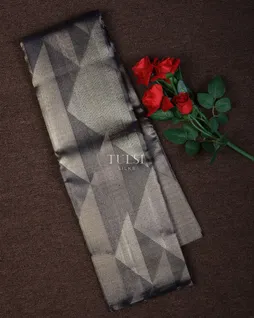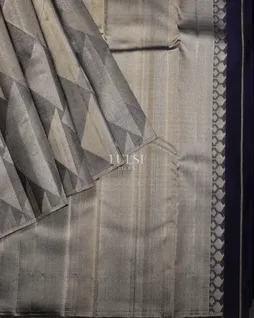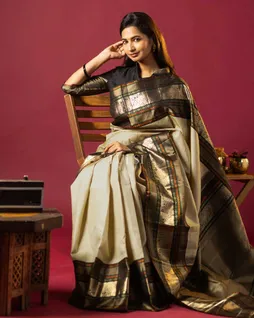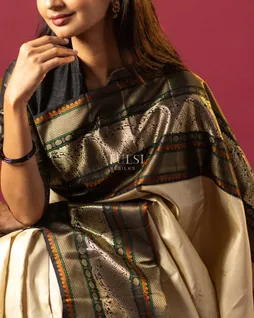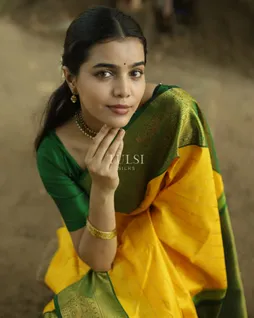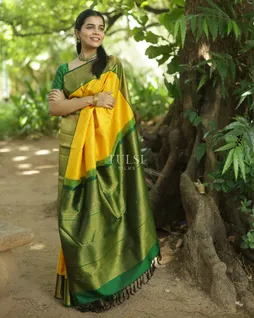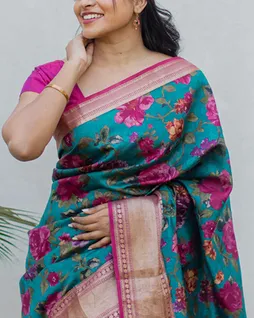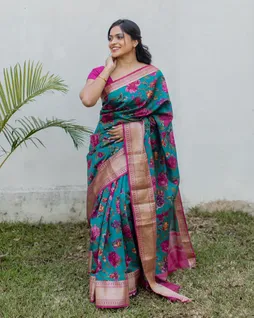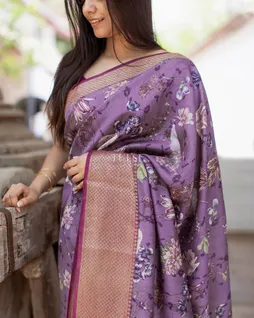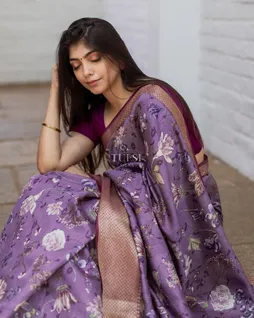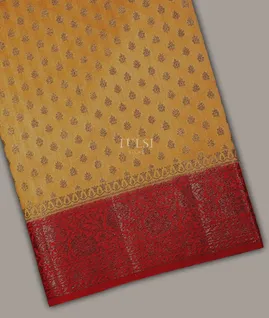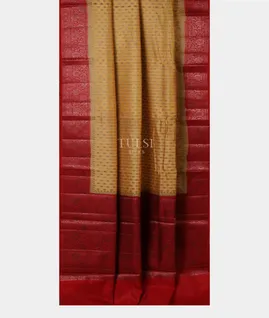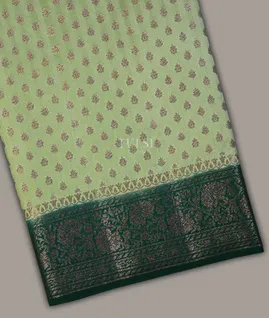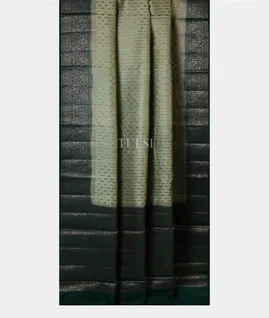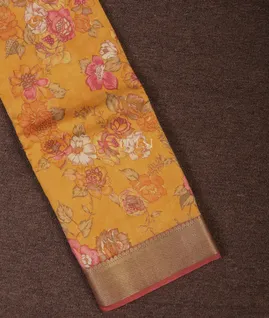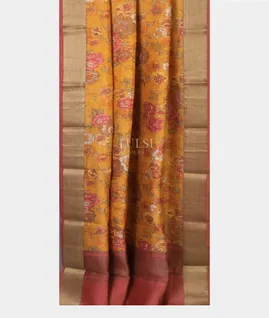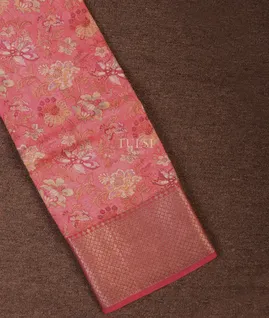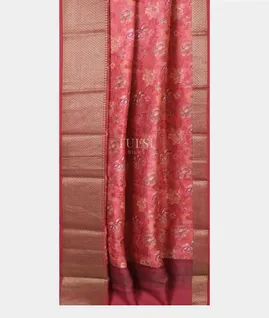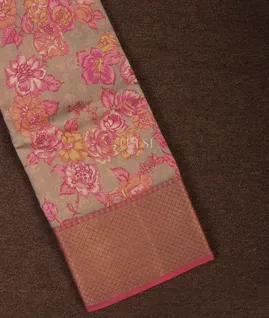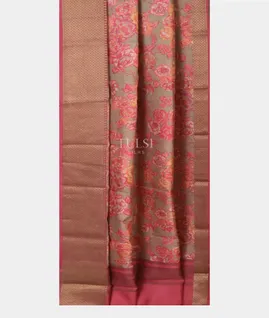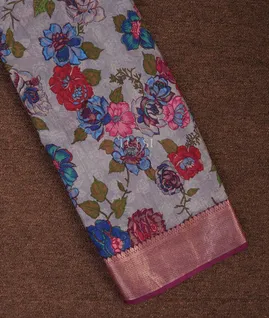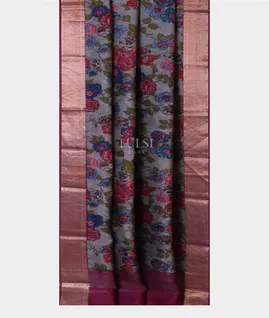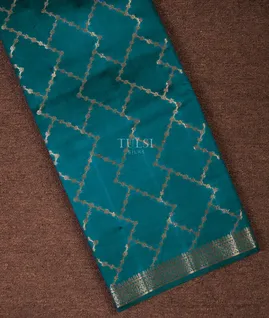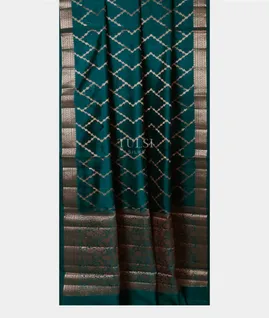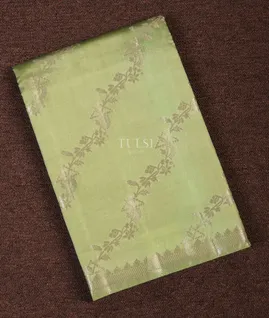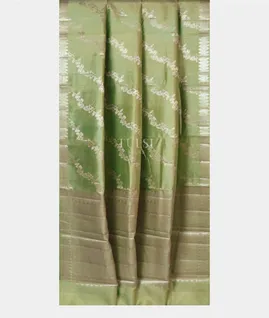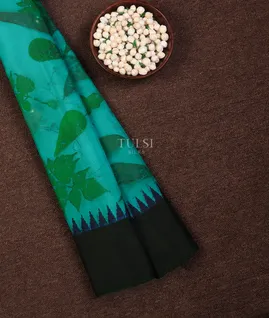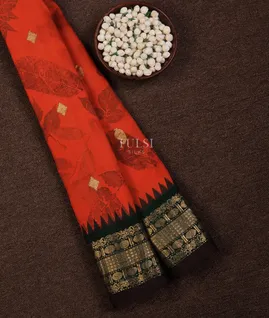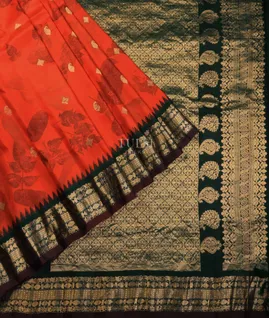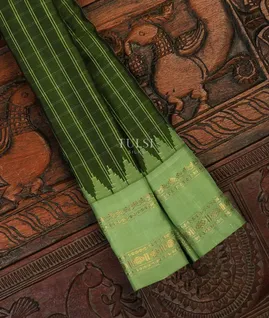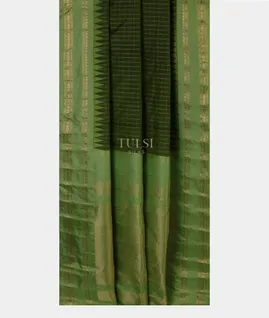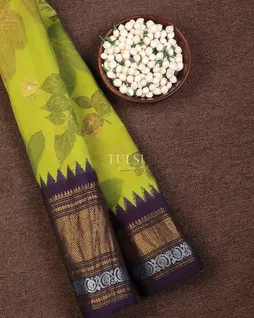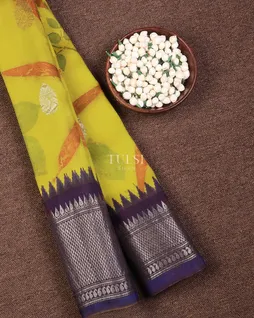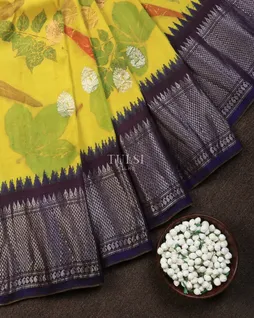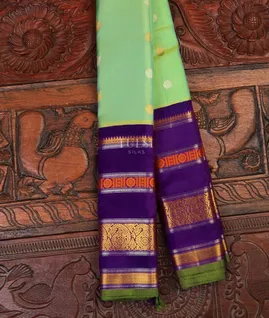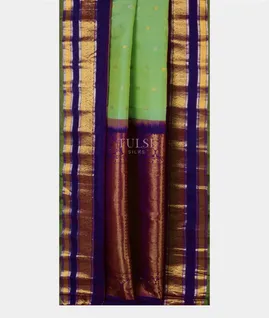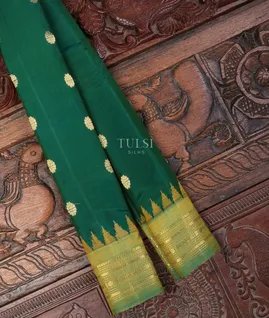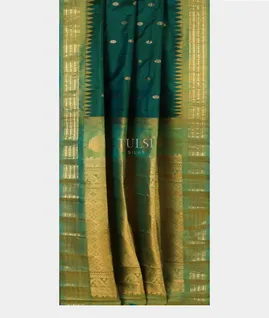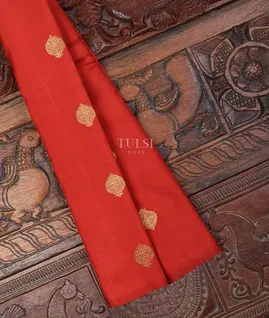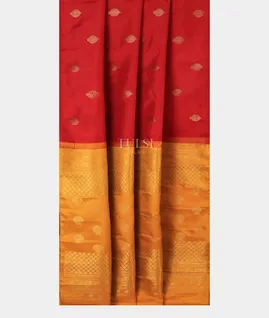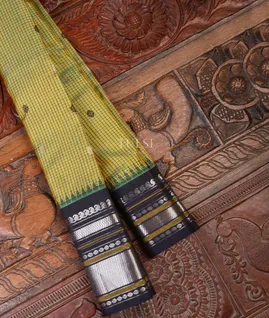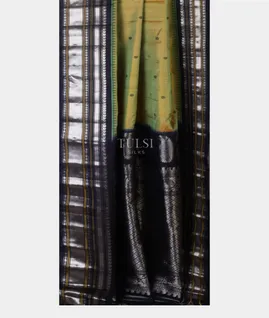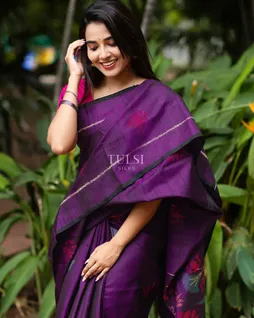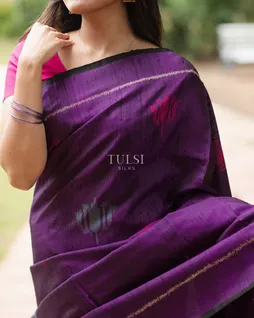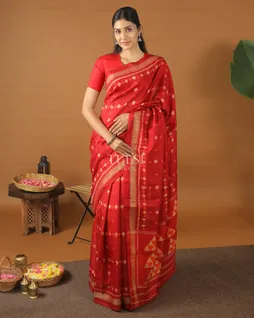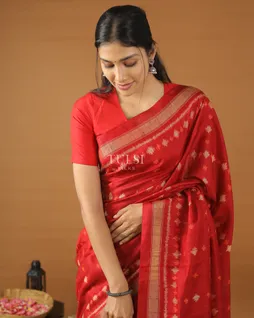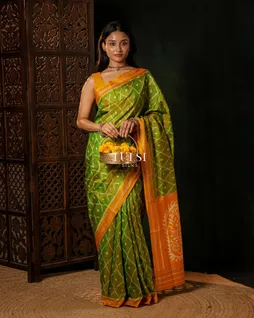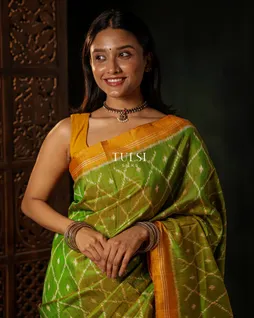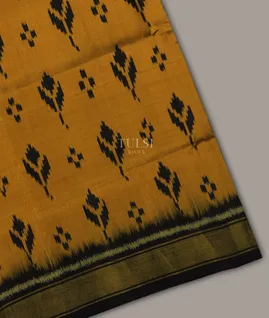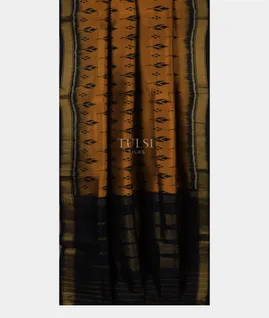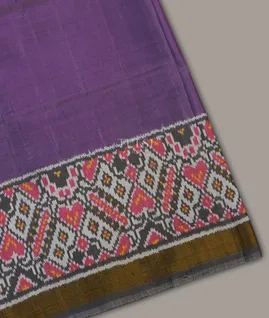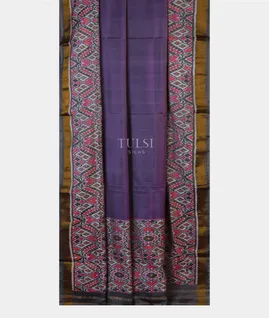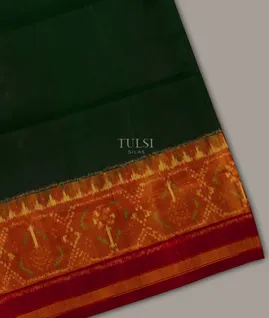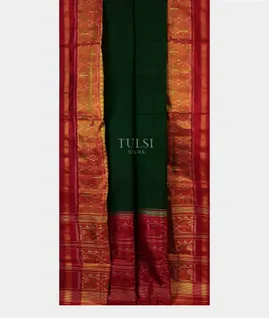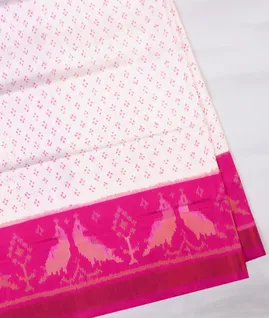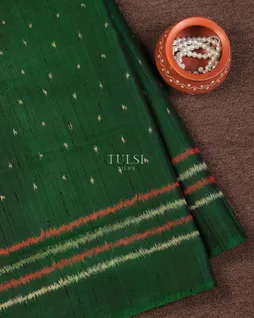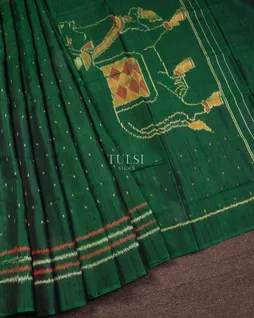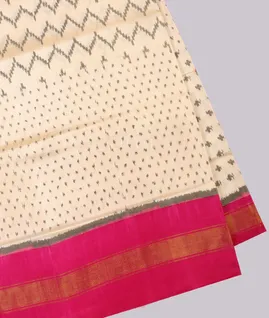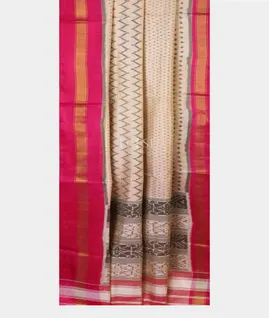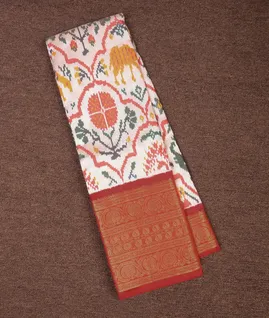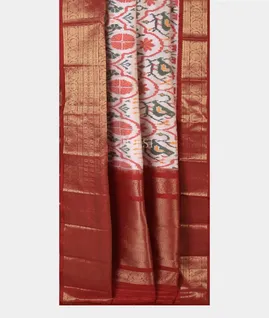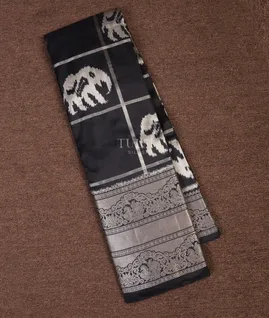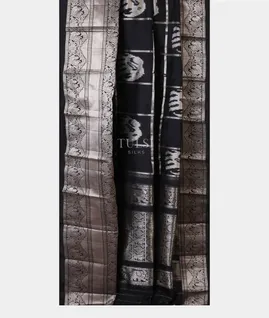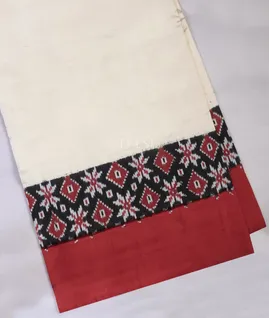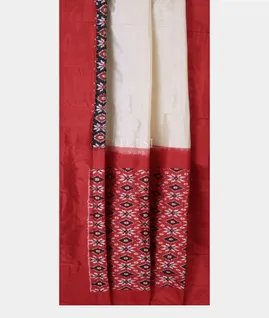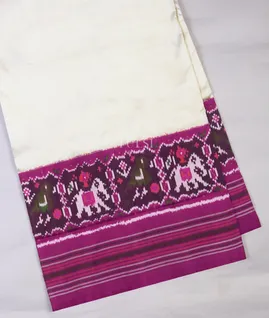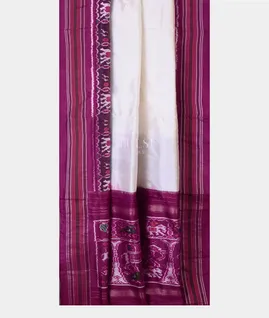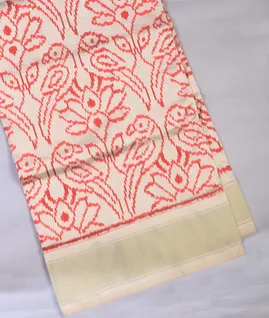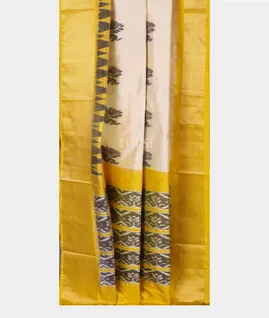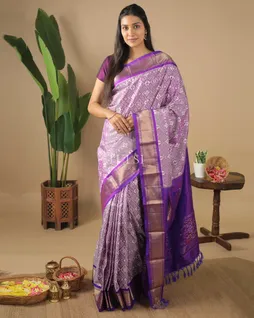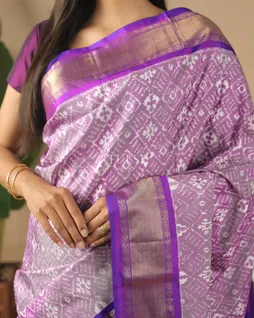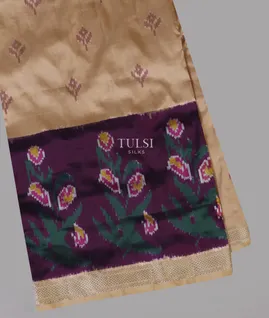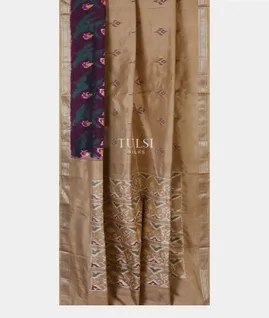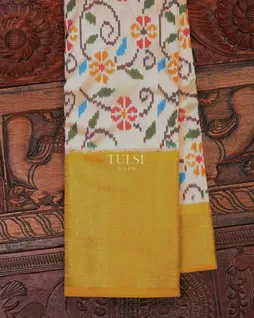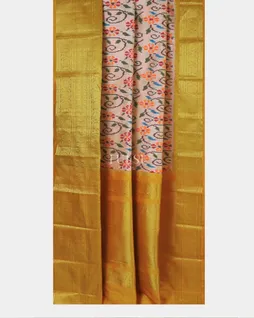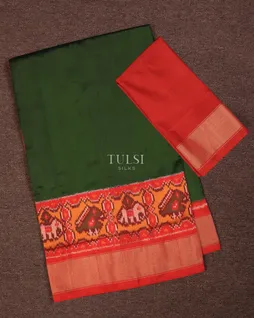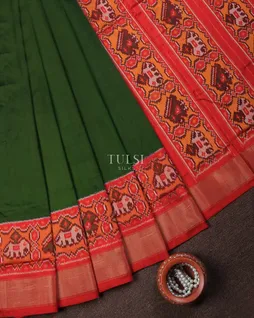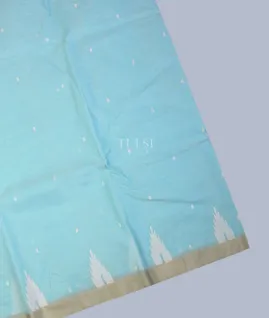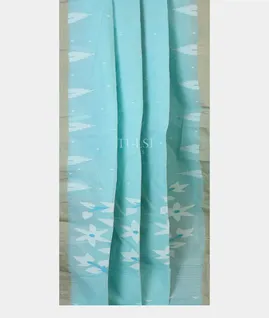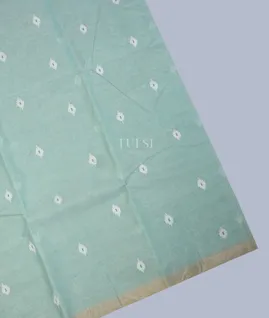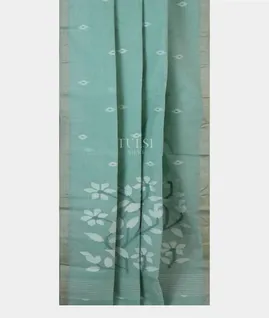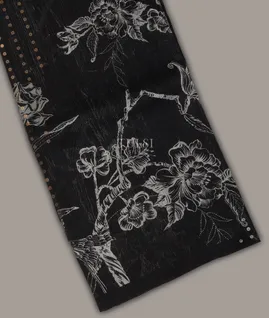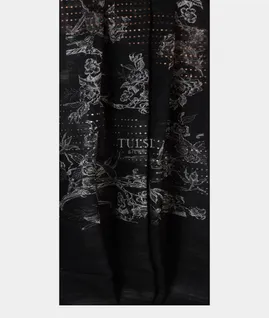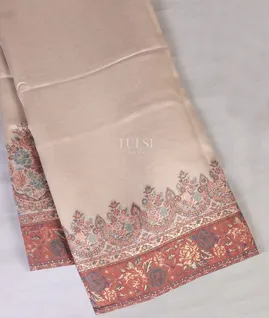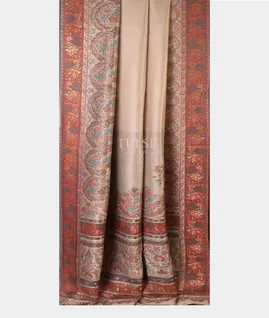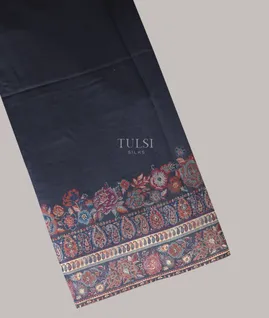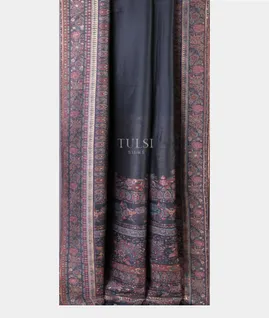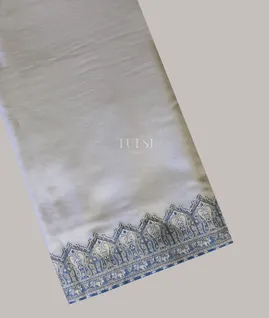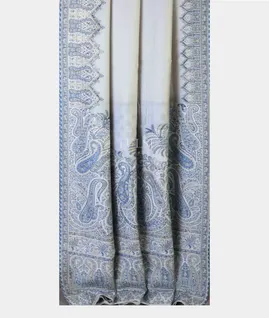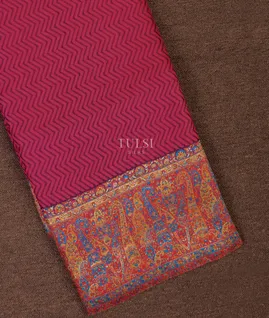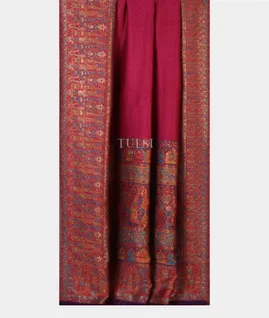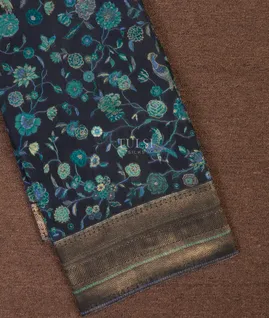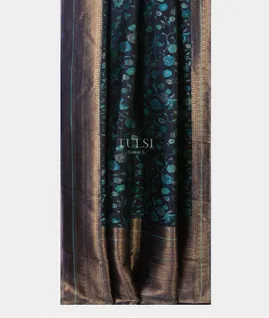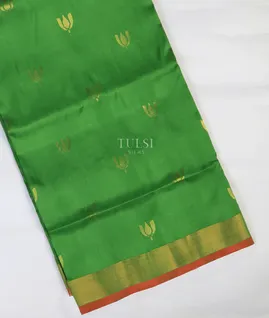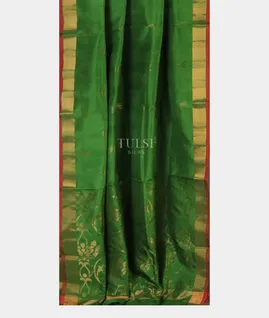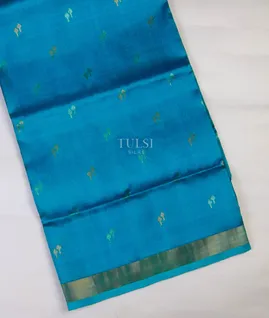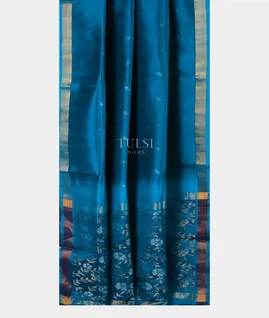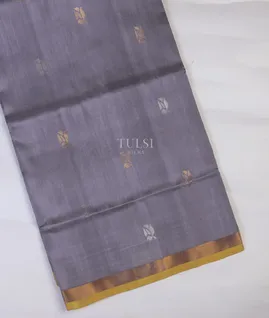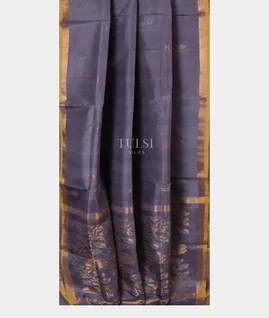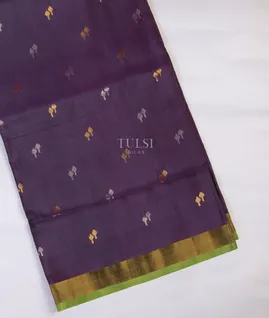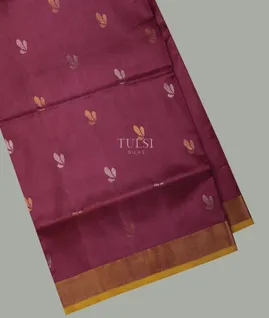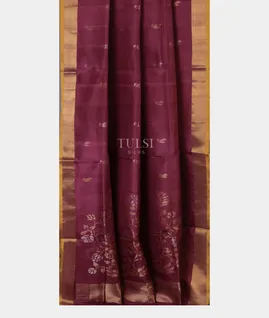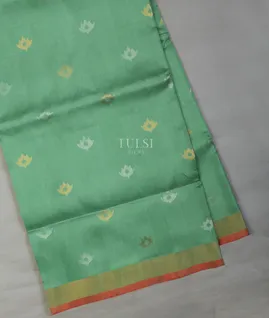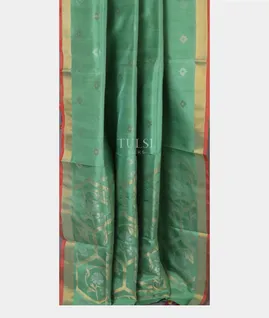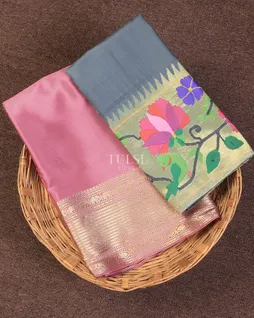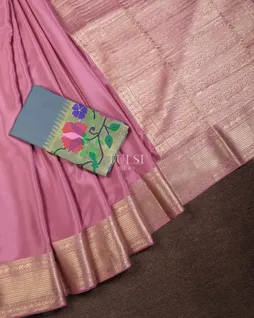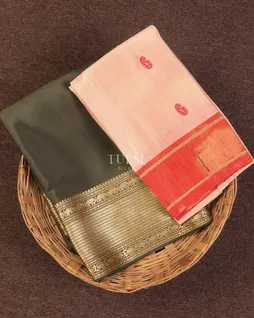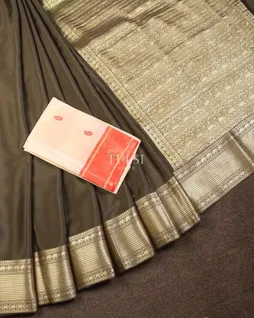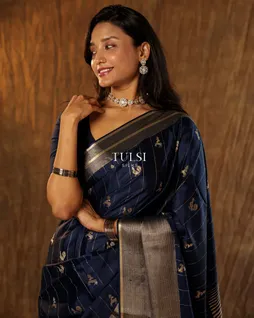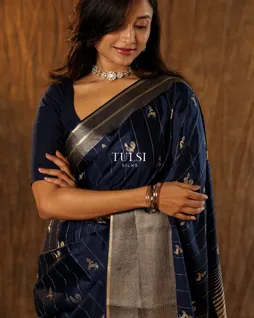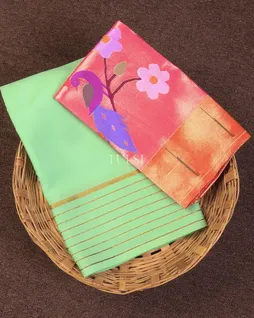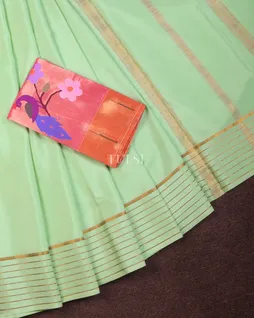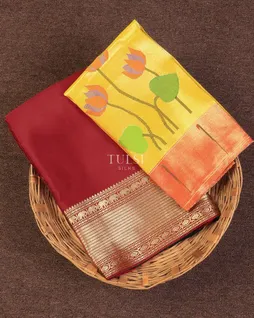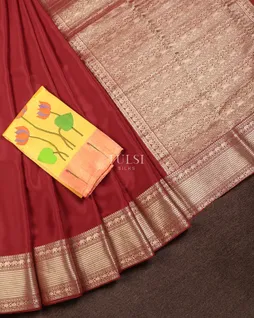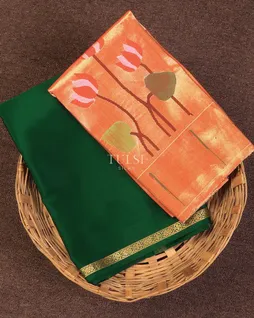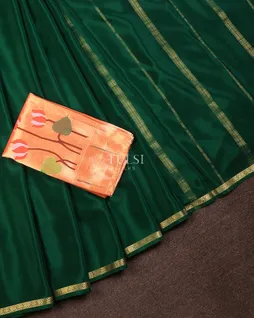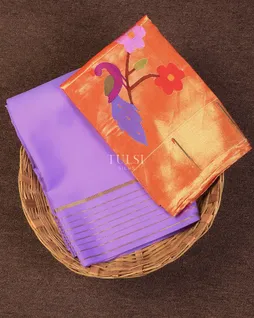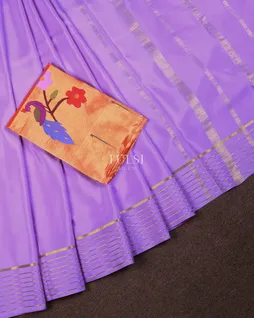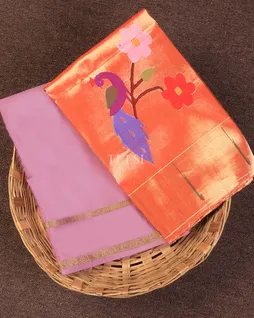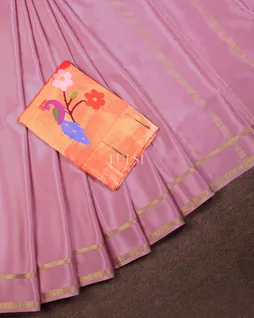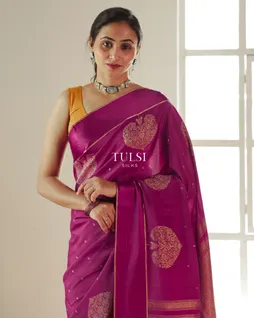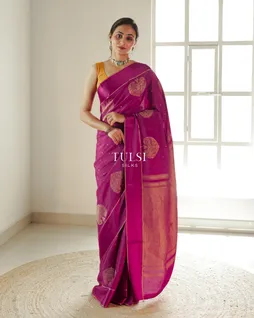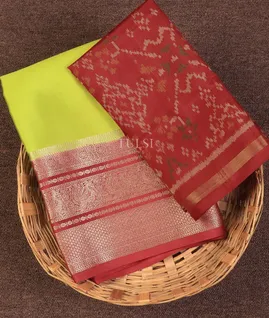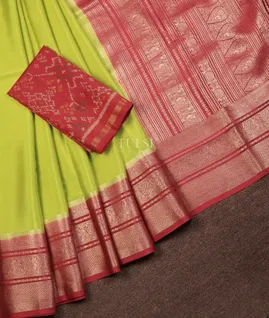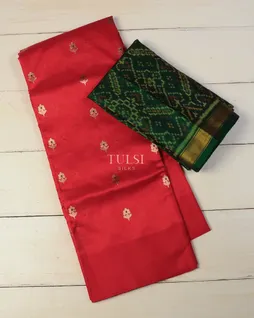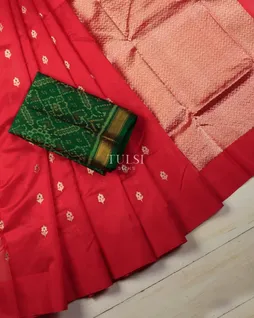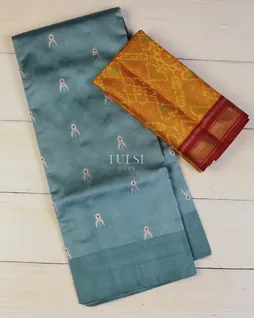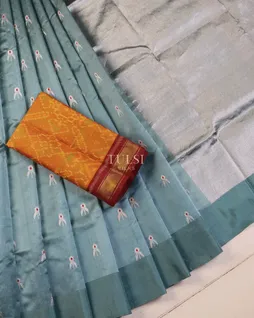14 Different Types of Traditional Sarees of Different States in India
India’s rich textile heritage is beautifully reflected in its traditional sarees, each region offering a unique weave, fabric, and story. At Tulsi Silks, we proudly curate the best sarees from across India, bringing authentic handwoven beauty to your wardrobe. From the elegance of Kanjivaram to the artistry of Baluchari, discover our finest collection of traditional Indian sarees, their types, colors, and latest designs below.
There are various saree types in India that are popular in fashion discussions among women. Indian saree can be worn in different styles such as drape style, shalwar-kameez style, etc. This blog will introduce you to some of the most popular sarees in India that are a must-have in every woman’s wardrobe. So be hooked till the end!
1. Kanjivaram Sarees – Tamil Nadu
Kanjivaram sarees are handwoven from pure mulberry silk and rich zari, known for their luxurious drape. They come in vibrant colors like red, gold, green, and purple, ideal for weddings and grand functions. These sarees often feature temple borders, peacocks, and mythological motifs. Tulsi Silks offers a curated range of bridal and casual kanjivarams. They symbolize timeless South Indian heritage and elegance.
- Styling Tips: Pair with high-neck or contrast embroidered blouses and gold temple jewellery.
- Occasion Suitability: Ideal for bridal wear, South Indian weddings, and festive occasions.
- Fabric Care Tips: Dry clean only. Store folded in muslin; avoid hanging to retain zari shape.
2. Banarasi Sarees – Uttar Pradesh
Banarasi sarees are crafted from fine silk with intricate brocade and Mughal-inspired designs. Popular for bridal wear, they shimmer with gold and silver zari detailing. From floral jaals to paisleys, each saree is a masterpiece. Tulsi Silks presents classic and modern color palettes in Banarasi styles. Their regal appeal makes them a top choice for weddings and festivals.
- Styling Tips: Opt for deep-neck blouses and a heavy choker for a regal look.
- Occasion Suitability: Perfect for North Indian weddings, receptions, and Diwali functions.
- Fabric Care Tips: Dry clean; air out after every wear, and keep in a cotton cover.
3. Chaniya Silk Sarees – Gujarat
Chaniya silk sarees burst with colorful embroidery and mirror work, ideal for festive occasions. They reflect Gujarati culture, especially worn during Navratri and Garba nights. The fabric is soft yet holds shape beautifully for twirls and dancing. Tulsi Silks brings a modern twist to this traditional attire. These sarees are perfect for youthful, celebratory looks.
- Styling Tips: Match with mirror-work blouses and oxidized silver jewellery.
- Occasion Suitability: Great for Navratri nights, cultural dance events, and festivals.
- Fabric Care Tips: Gentle dry clean; do not iron directly on embellishments.
4. Gadwal Sarees – Telangana
Gadwal sarees blend silk bodies with contrasting zari borders and cotton weaves. They're lightweight yet rich, making them comfortable for long wear. Ideal for temple visits, family functions, or formal events. Tulsi Silks offers authentic Gadwal silk and cotton-silk varieties. Their unique color contrast is both striking and elegant.
- Styling Tips: Choose elbow-length sleeve blouses with temple jewellery.
- Occasion Suitability: Suitable for religious ceremonies and traditional functions.
- Fabric Care Tips: Store with naphthalene balls and avoid moisture; dry cleaning is recommended.
5. Patola Sarees – Gujarat
Patola sarees feature double ikat weaving, taking months to complete a single piece. Their geometric and floral patterns are symmetrical on both sides. Colors like red, yellow, and green dominate these heritage weaves. Tulsi Silks showcases original Patan Patola and budget-friendly variants. Each saree is a legacy passed through generations.
- Styling Tips: Style with sleek hairdos and minimalistic jewellery for a heritage look.
- Occasion Suitability: Perfect for traditional weddings, pujas, and cultural events.
- Fabric Care Tips: Fold neatly after wear; dry clean to maintain color vibrancy.
6. Ikat Sarees – Odisha, Telangana, Gujarat
Ikat sarees are known for their tie-dye technique that creates blurred, artistic patterns. The design is dyed into the yarns before weaving, requiring high precision. They’re available in cotton for daily wear and silk for occasions. Tulsi Silks offers ikat sarees in bold and pastel shades. Their edgy, contemporary look makes them a favorite among young women.
- Styling Tips: Team up with earthy-toned blouses and boho jewellery.
- Occasion Suitability: Ideal for ethnic office wear, handloom fairs, and casual events.
- Fabric Care Tips: Hand wash cold or dry clean; do not bleach.
7. Kota Sarees – Rajasthan
Kota sarees are feather-light with square ‘khat’ patterns that allow breathability. They are ideal for summer weddings, office wear, and casual events. Available in cotton, silk, and tissue blends, they drape beautifully. Tulsi Silks offers pastel and vibrant Kota sarees for every mood. They bring together elegance and comfort effortlessly.
- Styling Tips: Pair with pastel blouses and pearl accessories for a breezy summer look.
- Occasion Suitability: Excellent for daytime events, summer festivals, and casual parties.
- Fabric Care Tips: Gentle hand wash in cold water; avoid wringing and harsh sunlight.
8. Kani Silk Sarees – Kashmir
Kani silk sarees are handwoven with wooden bobbins instead of jacquard, showcasing fine craftsmanship. The motifs are usually floral, inspired by Kashmiri gardens and nature. They are warm, luxurious, and perfect for winter events and functions. Tulsi Silks features authentic Kani sarees in regal tones and bold borders. Each piece is a blend of art, tradition, and grace.
- Styling Tips: Style with long-sleeve velvet blouses and Kashmiri-style jhumkas.
- Occasion Suitability: Ideal for winter weddings, cultural soirées, and festive gatherings.
- Fabric Care Tips: Dry clean; store flat with tissue between folds.
9. Uppada Silk Sarees – Andhra Pradesh
Uppada sarees are soft, shimmering, and lightweight, often chosen for bridal wear. They come with delicate zari motifs and smooth textures. The weaving process allows intricate detailing with a feather-like feel. Tulsi Silks provides a wide range of Uppada sarees in pastels and jewel tones. Perfect for grand occasions with a touch of modernity.
- Styling Tips: Match with elbow-length puff sleeve blouses and gold bangles.
- Occasion Suitability: Best for South Indian weddings, pre-wedding rituals, and housewarmings.
- Fabric Care Tips: Dry clean; avoid storing in plastic covers to prevent moisture.
10. Mysore Silk Sarees – Karnataka
Mysore silk sarees are known for their rich sheen and minimalistic elegance. They often feature solid colors with gold borders or temple motifs. Lightweight yet luxurious, they are ideal for formal and festive use. Tulsi Silks brings a variety of Mysore silk sarees in vibrant hues. They represent grace with simplicity for every woman.
- Styling Tips: Choose sleeveless or halter neck blouses and minimal makeup.
- Occasion Suitability: Suitable for formal functions, bridal trousseaus, and poojas.
- Fabric Care Tips: Dry clean; iron inside-out at low heat to preserve shine.
11. Chanderi Sarees – Madhya Pradesh
Chanderi sarees are airy, sheer, and decorated with fine zari or silk thread work. They are woven from silk, cotton, or both, giving them a crisp yet smooth feel. Perfect for office wear or light traditional events. Tulsi Silks offers pure Chanderi silk and cotton sarees in subtle prints. Their elegance lies in understated beauty.
- Styling Tips: Combine with hand-embroidered blouses and antique silver jewellery.
- Occasion Suitability: Ideal for office parties, elegant daywear, and light celebrations.
- Fabric Care Tips: Hand wash gently or dry clean; avoid scrubbing zari.
12. Baluchari Sarees – West Bengal
Baluchari sarees are known for narrative designs inspired by epics and folklore. They are woven in silk with pictorial pallus and borders. Traditionally worn by Bengali brides and during cultural events. Tulsi Silks showcases Baluchari sarees in classic shades like red, black, and maroon. They are perfect heirloom pieces with historical charm.
- Styling Tips: Pair with traditional Bengali-style blouses and a red bindi.
- Occasion Suitability: Perfect for Durga Puja, weddings, and storytelling-themed occasions.
- Fabric Care Tips: Store flat in a cotton wrap; dry clean to retain intricate patterns.
13. Chikankari Saree- Uttar Pradesh
The Chikankari Saree is one of the many traditional sarees of India worn by women in the Indian states of Uttar Pradesh and Bihar. It is one of the most popular and expensive Indian sarees. Most Indian weddings are incomplete without the bride wearing a Chikankari Saree, which makes it a must-have saree, especially for brides.
- Styling Tips: Pair with pastel blouses and pearl accessories for a breezy summer look.
- Occasion Suitability: Excellent for daytime events, summer festivals, and casual parties.
- Fabric Care Tips: Gentle hand wash in cold water; avoid wringing and harsh sunlight.
14. Phulkari Saree - Punjab
The phulkari saree is one of the many traditional Indian sarees of Punjab. It is a handwoven saree with gold and silver thread embroidery. It is woven with a mix of cotton, silk, and gold or silver threads. The phulkari pattern is usually woven on the sarees in the border and usually consists of flowers, leaves, vines, creepers, and other natural motifs.
- Styling Tips: Match with mirror-work blouses and oxidized silver jewellery.
- Occasion Suitability: Great for Navratri nights, cultural dance events, and festivals.
- Fabric Care Tips: Gentle dry clean; do not iron directly on embellishments.
Conclusion
These were some of the handpicked different types of sarees of different states, loved and admired by all. Any one of these traditional Indian sarees in your wardrobe can elevate your overall fashion game. If you are scratching your head wondering where you could buy the best of traditional Indian sarees, then here is the answer! Visit our Tulsi Silks website to buy the best Indian sarees with a choice of different options in designs and colors.

